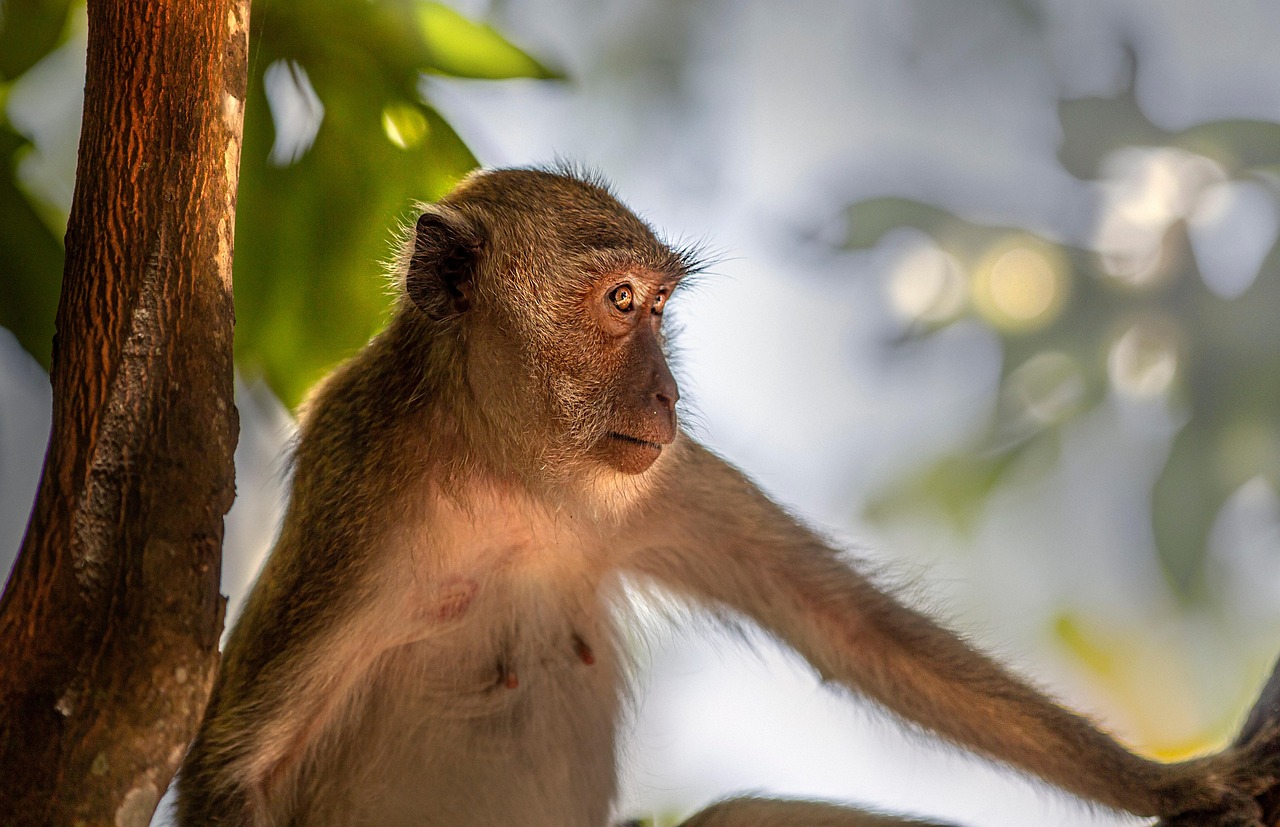The Crab-eating Macaque, also known as the Long-tailed Macaque, is a highly adaptable primate native to Southeast Asia. Despite its name, it primarily eats fruits and leaves rather than crabs. Known for its long tail, expressive face, and intelligence, it thrives in various habitats, including forests, coastal areas, and urban environments.
Physical Description
- Size: 38–55 cm (15–22 inches), excluding the tail
- Tail Length: 40–65 cm (longer than its body)
- Weight:
- Males: 5–9 kg (11–20 lbs)
- Females: 3–6 kg (6.5–13 lbs)
- Coloration:
- Fur ranges from grayish-brown to golden-brown, with a lighter underside.
- Dark fur on the head may form a small crest.
- Face & Tail:
- Pinkish or grayish face, often bare with expressive eyes.
- Long tail (often as long as or longer than the body), used for balance in trees.
Habitat & Distribution
- Native to:
- Thailand, Indonesia, Malaysia, Myanmar, Vietnam, Cambodia, Laos, the Philippines, and parts of India.
- Preferred Habitat:
- Mangroves, coastal forests, riverbanks, lowland and highland forests.
- Frequently found near villages, temples, and cities, where they scavenge food.
Behavior & Diet
- Diet:
- Omnivorous, primarily eating fruits, seeds, leaves, flowers, and small animals.
- Occasionally eats crabs, shellfish, insects, bird eggs, and small vertebrates.
- Often seen washing food in water before eating.
- Social Structure:
- Lives in large troops (5–60 individuals), with a dominance hierarchy.
- Alpha males lead the group and defend territory.
- Strong female bonds maintain group stability.
- Daily Activity:
- Diurnal (active during the day), moving between trees and ground.
- Highly intelligent and curious, known for problem-solving and tool use.
- Communication:
- Uses facial expressions, vocalizations, and body gestures.
- Grinning or showing teeth is often a sign of submission or fear, not aggression.
Breeding & Reproduction
- Mating Season: Year-round, with peaks in some regions.
- Gestation: 162–193 days (about 5.5–6.5 months).
- Offspring:
- Usually one infant per birth.
- Infants are born dark-furred, gradually lightening as they mature.
- Parental Care:
- Mothers nurse for about a year.
- Young macaques learn by observing adults and playing with peers.
Threats & Conservation
- Threats:
- Habitat destruction, hunting, and illegal pet trade.
- Human conflict, as they often raid crops and food sources.
- Used in medical research, raising ethical concerns.
- Conservation Status:
- Listed as “Vulnerable (VU)” on the IUCN Red List.
- Found in protected national parks and wildlife reserves.
Interesting Facts
- Known for stealing food and objects, especially in tourist areas like Bali.
- One of the few primates known to use tools, such as using rocks to open shellfish.
- Plays an important role in seed dispersal, helping forests regenerate.
- Sacred in some cultures, especially in Hindu and Buddhist temples.
Summary
The Crab-eating Macaque (Macaca fascicularis), or Long-tailed Macaque, is a highly adaptable, intelligent primate found across Southeast Asia. It is known for its long tail, social behavior, and opportunistic diet, which includes fruits, leaves, and small animals. While playful and resourceful, its conflict with humans poses challenges for conservation. Despite this, it remains an ecologically significant species in its native habitat.
Views: 259
Subscribe to the newsletter:
